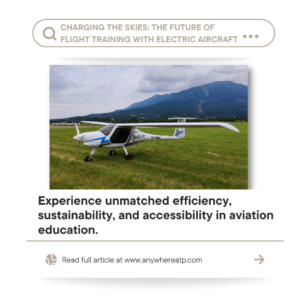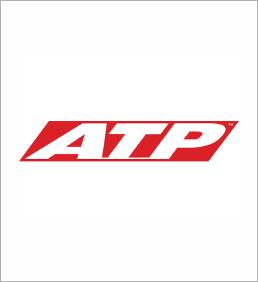
Charging the Skies: The Future of Flight Training with Electric Aircraft
Introduction:
The aerospace industry is undergoing a profound transformation towards a more sustainable future, with the advent of hybrid and electric aircraft leading the charge. As industries worldwide strive for carbon neutrality, the aviation sector is not far behind. The emergence of hybrid and electric aircraft presents a promising opportunity to disrupt the flight training industry, offering numerous advantages in terms of efficiency, sustainability, and accessibility.
Advantages of Electric Aircraft:
Electric aircraft boast several advantages over their traditional counterparts. They are highly efficient, powered by electric motors that produce minimal noise and emissions compared to combustion engines. This efficiency translates to lower operating costs and reduced environmental impact, aligning with the industry’s sustainability goals. Additionally, electric aircraft require lower maintenance due to their simplified design, making them more reliable and cost-effective for flight training purposes.
Current Developments in Electric Aviation:
The electric aviation sector is experiencing rapid growth, with numerous projects underway to develop and commercialize electric aircraft. Major companies such as Pipistrel, Faradair, and Eviation are at the forefront of this revolution, pioneering innovative designs and technologies. Pipistrel, for example, has developed the Velis Electro, the world’s first electric-powered aircraft certified for passenger flights. Similarly, Faradair aims to revolutionize commercial air travel with its concept of a “flying van in the sky,” offering sustainable and cost-effective transportation options.
Implications for Flight Training:
The adoption of electric aircraft in flight training holds immense potential to transform the industry. With their lower operating costs and simplified maintenance requirements, electric aircraft make flight training more accessible to a wider audience. Students can log more flight hours at a lower cost, accelerating their progress toward pilot certifications. Additionally, training on cutting-edge electric aircraft technology prepares students for future careers in the aviation industry, where sustainability and efficiency are increasingly valued.
Challenges and Future Outlook:
Despite the numerous benefits of electric aircraft, several challenges remain to be addressed. Range limitations, battery technology constraints, and regulatory hurdles pose significant obstacles to the widespread adoption of electric aviation. However, ongoing research and development efforts, supported by organizations such as NASA and the FAA, aim to overcome these challenges and realize the full potential of electric aircraft. With the continued advancement of technology and regulatory frameworks, the future of flight training with electric aircraft looks promising.
Conclusion:
As the aviation industry embraces the transition towards electric aviation, the future of flight training is set to be revolutionized. Electric aircraft offer a sustainable, efficient, and accessible solution for training the next generation of pilots. With ongoing advancements in technology and regulatory support, electric aviation holds the key to a greener, more sustainable future for aviation. By embracing this transformative technology, flight training institutions can lead the way toward a brighter future in aviation.
© 2024.Anywhereatp, LLC all rights reserved
Image by Valentin Guigue on Researchgate https://www.researchgate.net/profile/Valentin-Guigue
Number of seats
Category ATP CTP




